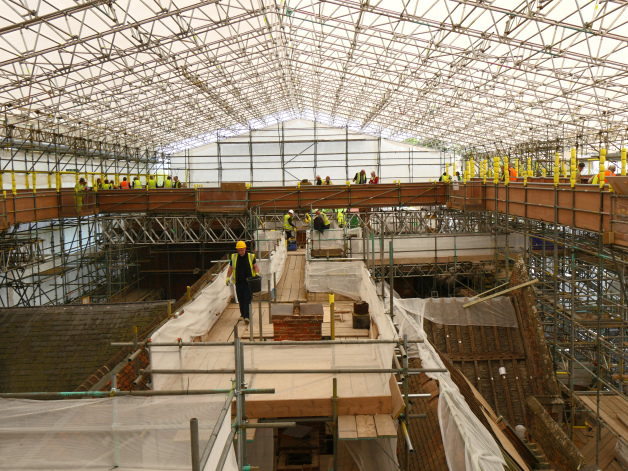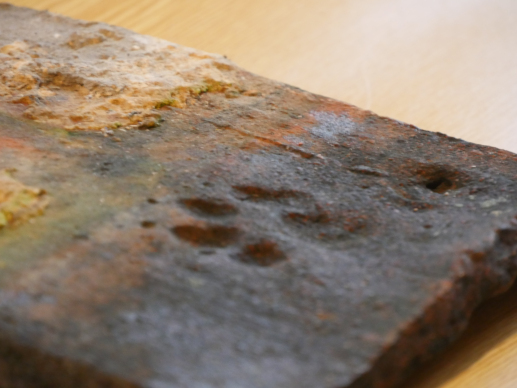Scientists and archaeologists at National Trust mansion The Vyne in Hampshire are giving visitors a unique insight into their work as part of a £5.4 million (Approx $6.9 million) project to save the former Tudor ‘power house’.
The Vyne, whose famous visitors included Henry VIII and Jane Austen, is undergoing an ambitious 18 month project to repair its leaking roof and crumbling chimneys, severely damaged in the storms of recent years.
As part of the project, partners including archaeologists, dendrochronologists and heritage science researchers from the University of Oxford are using high and low tech equipment to discover how this complex 500 year old building was constructed, then re-arranged over the centuries.
This is the first time the conservation charity has combined science and technology to this extent alongside centuries-old craft skills, which are being used to produce thousands of hand-made tiles and bricks for the project.
Visitors can watch the conservation work as it progresses from an all-access, 360° rooftop walkway. Protected by a huge weatherproof ‘shell’, the walkway looks down on dramatic views of The Vyne’s rooftops.
Monthly visits from a mobile heritage laboratory will also give visitors an opportunity to work alongside scientists from the University of Oxford, using a range of equipment to find out how they measure deterioration in historic building materials, and protect the nation’s heritage from decay.
National Trust archaeologist Gary Marshall says: “Through extraordinary scientific and technological equipment we’re finding out so much about The Vyne’s construction and we’re sharing our discoveries with our visitors.
“With a variety of different methods and technology we are able not only to pinpoint more accurately the date of The Vyne’s construction, and the materials the original builders used to create tiles and bricks, even insulation, but also show how we have made these discoveries and give visitors a chance to explore the science involved.”
Professor Heather Viles from the Oxford Rock Breakdown Laboratory explains: ‘We’ve developed a range of high and low tech kit that allows us to investigate the very serious problem of water ingress at The Vyne.
“We’ll be able to show visitors that by combining quite simple tools such as hand held moisture meters and Karsten tubes with more complex tech methods like 2D resistivity surveys, we can probe into the walls and locate areas of heavy moisture, but without causing damage.”
New dendrochronology analysis – the science of tree-ring dating – has revealed that some of The Vyne’s 16th-century timbers were recycled from an earlier building, most probably the ‘lost’ north forecourt. This was part of a larger estate that now lies beneath the north lawn.
Gary Marshall adds: “We have made some rather delightful discoveries too, such as a number of clay tiles sporting animal paw prints. Around 15 prints have been found to-date, made by Georgian and Victorian dogs of various sizes who must have walked in the wet clay while the tiles were being made all those years ago and been preserved for posterity!”
The story of The Vyne’s roof continues inside the house where the spotlight is shone on 19th century owner William Wiggett Chute who inherited a building in great disrepair. However his extraordinary determination to save the neglected mansion secured its future.





